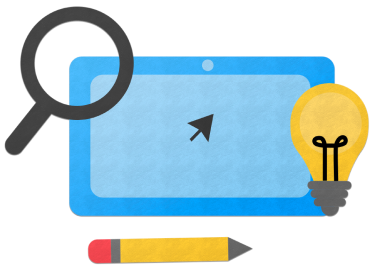
Articulação
O Laboratório de Educação desenvolve metodologias a partir de pesquisas acadêmicas, para que todas as crianças alcancem o seu potencial de aprendizagem. Implementamos e monitoramos projetos com profissionais de redes públicas de ensino, famílias e comunidade.

Para embasar ações e estratégias não basta definir, produzir e disponibilizar conteúdos de qualidade. Vivemos num contexto em que a informação está amplamente disponível, inclusive de forma excessiva. A questão que se coloca é como ajudamos os educadores a filtrar e traduzir esses conhecimentos na prática. Neste contexto, o Labedu aposta nos seguintes princípios:

Articulação
Conectamos pesquisa e implementação, contextos de aprendizagem formais e informais, conhecimentos teóricos e práticos. Desenvolvemos parcerias entre diversos setores, integrando diferentes formas de atuação para transformar práticas educativas em escalas micro e macro.

Conhecimento pedagógico
É a peça-chave para processos de implementação de políticas públicas. A transformação sistêmica e sustentável das práticas educativas exige conhecimento sobre como as crianças e também os adultos aprendem novas maneiras de entenderem e desempenharem seus papéis, sejam eles dentro ou fora do contexto escolar.

Reprodução é diferente de apropriação
Não basta promovermos mudanças mecânicas, sem compreensão ou intencionalidade, é preciso impulsionarmos experiências formativas que deem sentido a novos modos de fazer. A implementação de um projeto é o início, mas a transformação em direção à autonomia se dá no processo.

Qualidade ao invés de quantidade
A partir de focos estratégicos, aprofundamos e fortalecemos o papel profissional de quem atua nos sistemas públicos de ensino e de apoio à infância. Não estamos em busca de abranger todos os campos de conhecimento, mas de investir em caminhos estruturais que sejam ponto de partida para futuras transformações.

aos nossos materiais e conteúdos pedagógicos gratuitos
formais e informais participaram dos nossos processos formativos
são nossos parceiros
foram impactadas pelos nossos projetos
tiveram contato com nossas metodologias
As crianças aprendem o tempo todo e em qualquer lugar. Aquilo que observam e vivenciam tem potencial para impactar seu desenvolvimento de forma favorável ou não. Por isso, o nosso papel enquanto adultos é fundamental!
Está em nossas mãos mediar as interações das crianças com o mundo, assim como servir de referência, dando exemplos a partir de nossas atitudes e decisões. O que as crianças aprendem, como se desenvolvem e que adultos se tornarão depende de nós!
Neste contexto, o Laboratório de Educação busca provocar reflexões e sensibilizar os adultos sobre o seu importante papel no processo de aprendizagem das crianças com que convivem, oferecendo meios para promover interações significativas dentro e fora da escola.